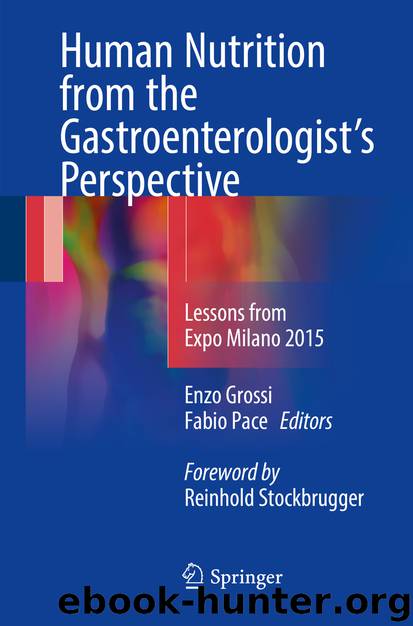Human Nutrition from the Gastroenterologist’s Perspective by Enzo Grossi & Fabio Pace

Author:Enzo Grossi & Fabio Pace
Language: eng
Format: epub
Publisher: Springer International Publishing, Cham
7.3 Diverticular Disease as a Western Disease
Historically, diverticulosis has been considered as a “disease of Western world” because of its high prevalence in developed countries compared with certain parts of Africa and Asia [9]. Indeed, early studies conducted by Painter and Burkitt in the last century showed a lower prevalence of this condition in rural Africa compared to Western countries [10]. Moreover, some features of colonic diverticula were different in Western and underdeveloped countries: in Western countries the diverticula are most common in sigmoid tract and left colon and occur in old people, while in Asian population they are predominantly in the right colon and occur at a younger age [9]. However, data from these postmortem studies were influenced by several problems of sampling bias, including the different life expectancies of the two populations.
In the last decades, several studies were performed in migrant populations to evaluate the prevalence of diverticulosis and diverticular disease in different ethnic groups: a UK study observed a lower prevalence of diverticular disease among Indian-subcontinent Asian patients compared with other ethnic groups [11]. Similarly, a Dutch cross-sectional study of 3004 patients undergoing colonoscopy found that diverticulosis was diagnosed significantly more often in immigrant men than in native Dutch [12].
Interestingly, the change of the environment may influence the risk of diverticular disease: in a Swedish study population that prospectively followed a national cohort of four million residents, the authors assessed the risk of hospital admissions and deaths because of diverticular disease and acute diverticulitis from 1991 to 2000 [13]. According to previous studies, they found a lower risk for hospital admissions because of diverticular disease and acute diverticulitis for the non-Western immigrants than for Western immigrants and native Swedes. Interestingly, the risk in immigrant population increased with years of residence in Sweden.
Although the epidemiological data have some limitations, the evidences suggest that diverticular disease is a condition that affects mainly the developed countries. The cause may be attributed to genetics and environmental factors. In particular, the differences in terms of lifestyle factors, including dietary habits, might play a critical role in the etiology of this disease.
Download
This site does not store any files on its server. We only index and link to content provided by other sites. Please contact the content providers to delete copyright contents if any and email us, we'll remove relevant links or contents immediately.
Nutrition for Sport, Exercise, and Health by Spano Marie & Kruskall Laura & Thomas D. Travis(3562)
Nutrition for Sport, Exercise, and Health by Marie Spano & Laura Kruskall & D. Travis Thomas(3554)
The Sprouting Book by Ann Wigmore(3419)
Flavor Flours by Alice Medrich(2651)
Memory Rescue by Daniel G. Amen(2268)
Superfood Smoothie Bowls: Delicious, Satisfying, Protein-Packed Blends that Boost Energy and Burn Fat by Chace Daniella(2240)
Dirty Genes by Ben Lynch(2165)
The Bad Food Bible by Aaron Carroll(2126)
The Poisoner's Handbook by Deborah Blum(1986)
Genius Foods by Max Lugavere(1978)
Good Calories, Bad Calories by Gary Taubes(1957)
The Main Street Vegan Academy Cookbook by Victoria Moran(1943)
The I Quit Sugar Cookbook by Sarah Wilson(1881)
Core Performance Essentials by Mark Verstegen(1864)
Memory Rescue: Supercharge Your Brain, Reverse Memory Loss, and Remember What Matters Most by Amen Dr. Daniel G(1853)
Big Girls Do It Stronger by Jasinda Wilder(1809)
Android App Development by Franceschi Hervé J.;(1737)
Sugar Crush by Dr. Richard Jacoby(1690)
Dr. Colbert's Keto Zone Diet by Don Colbert(1550)
